Vibrant Gardens with Lantana: Tips for Healthy Growth and Beauty
Overview of Lantana
1. Characteristics of Lantana
Lantana is a small shrub with many horizontal branches, covered with fine hairs and short downward-curving thorns. Its leaves are oval-shaped, pointed at the tips, rough on the surface, serrated at the edges, with the upper side having short, stiff hairs and the underside having softer hairs. The leaf blades are 3-9 cm long and 3-6 cm wide, with short stems that grow longer near the top.
Lantana’s flowers are stalkless, appearing in white, yellow, orange-yellow, or red, forming small spherical clusters that resemble heads. The flowers have bract leaves shaped like spears, bell-shaped calyxes with two lips, and a tube-like corolla with four uneven lobes. The fruit is round, red, and encased in a calyx, containing two hard, rough seeds.
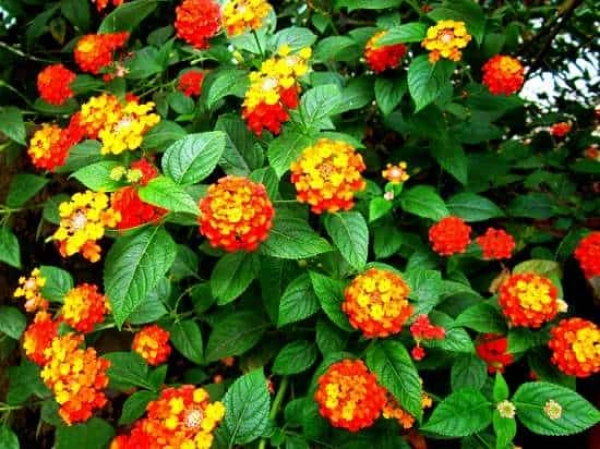
In folklore, Lantana is also known as "five-color flower," "grape-scented shrub," "four-season plant," and other local names. Its scientific name is Lantana camara Linn., belonging to the verbena family (Verbenaceae). Nearly all parts of the Lantana plant, including leaves, flowers, and roots, are used in traditional medicine for their properties in reducing fever, detoxifying, anti-swelling, stopping bleeding, and relieving pain.
2. Distribution, Harvesting, and Processing
Lantana originated in Central American countries and was later spread across many regions, including the Far East, Mangat, and New Caledonia. In New Caledonia, Lantana grew so abundantly that the government had to issue an order to eradicate it, prohibiting even keeping a single plant for decoration.
The plant is harvested throughout the year, and after collecting, it can be used fresh or dried for preservation. The leaves and branches are typically used as medicine and are dried or dehydrated.
3. Parts Used
Leaves, flowers, and roots.
Medicinal Uses of Lantana
1. Flowers
The chemical composition includes 0.07% essential oil and other major components such as Humulene, beta-Caryophyllene, gamma Terpinene, alpha-Pinene, and Cymene.
In traditional medicine, Lantana flowers are sweet, cold, and have detoxifying properties, promoting blood circulation and stopping bleeding. They are used to treat symptoms such as coughing up blood due to tuberculosis, sunstroke headaches, stomach pain with vomiting, vulvar inflammation, eczema, and injuries caused by sprains.
- Stomach pain with vomiting: Boil 10-15 Lantana flowers and mix with a little salt to drink.
- Sprain injuries: Crush fresh Lantana flowers and apply to the affected area.
- Eczema: Take dried Lantana flowers in powder form (3-5g daily) and apply crushed fresh leaves to the affected skin.
- Coughing up blood: Boil 15-20g of Lantana flowers to drink.
2. Roots
Lantana roots contain phenols, amino acids, and flavone glycosides. Studies show that Lantana root extract can lower blood pressure, stimulate respiration in cats, increase the tone of the duodenum in rabbits, and prolong phenobarbital-induced sleep in mice.
In traditional medicine, Lantana roots are sweet, bitter, and cold. They promote blood circulation, expel wind, remove dampness, and clear heat, often used to treat arthritis, mumps, and injuries from sprains.
- Headaches: Boil 30g of fresh Lantana roots.
- Toothache: Boil 30g of fresh Lantana roots with 30g of gypsum and use the water as a mouth rinse.
- Mumps: Boil 30g of dried Lantana roots.
3. Leaves
In folklore, Lantana leaves are often crushed and applied to wounds, ulcers, and snake bites or used in steam baths to treat colds and stop bleeding.
- Skin rashes: Boil fresh branches and leaves to wash and soak the affected area.
- Diabetes: Boil 40g of dried Lantana plant (including flowers, branches, and leaves) and drink as tea daily.
How to Care for Lantana
Lantana needs careful attention to thrive. First, sunlight is the most critical factor. This plant loves sunlight and requires at least 6 hours of exposure daily. While it can tolerate afternoon shade, it will produce fewer flowers if grown in low-light conditions.
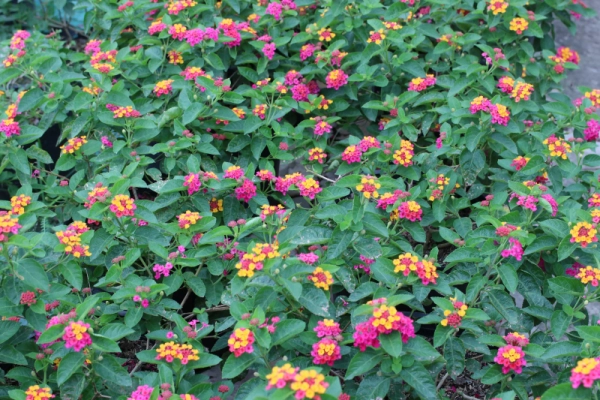
Lantana grows best in well-drained soil, though it can adapt to various soil types. Ideally, the soil should have a neutral pH between 6.0 and 8.0. Ensure the plant gets sufficient water, about one inch per week. In sandy soils, watering may be needed daily, especially if flowering slows down.
Propagation of Lantana
Lantana can be propagated by seeds or cuttings. Cuttings are more reliable, as many Lantana varieties are hybrids, and seeds may not produce plants identical to the parent. Here is a guide for propagating Lantana from cuttings:
- Prepare pruning shears, a 4-inch cutting, a pot of moist soil or a mix of perlite and peat moss, and rooting hormone (optional).
- Cut a 4-inch section from a new branch, remove the lower leaves, leaving one or two sets at the top.
- Insert the cutting into the prepared soil, firm the soil around it, and water thoroughly.
After about 3-4 weeks, the cuttings will develop roots. Once the plant starts sprouting new shoots or feels firmly anchored in the soil, you can remove the plastic bag and care for the plant in a well-lit area until it's ready to be transplanted outdoors.
How to Grow Lantana from Seeds
For those interested in growing lantana from seeds, harvesting and storing seeds from perennial plants is a simple process:
- When the fruits turn black, extract the seeds from the pods, clean them, and let them dry on a paper towel.
- Store the seeds in an airtight container in the refrigerator until ready to sow.
- Soak the seeds in warm water for about 24 hours before planting them in the soil.
- Place the seeds in small pots, cover them with soil, and keep the pots moist in an environment with a temperature between 70-75°F.
- After about a month, the seedlings will emerge and be ready for outdoor planting.
Planting and Repotting Lantana
Lantana grows very well in pots, especially in warmer regions where it tends to become invasive. Planting in pots is a good option to control its growth.
- Choose a pot that is only slightly larger than the plant's current root ball, as lantana prefers tight spaces.
- Ensure the pot has good drainage holes, and you can add small stones to the bottom to enhance drainage.
- Use well-draining potting soil, and mix in sand or perlite to improve drainage.
Lantana needs repotting when the roots become overgrown. If you're planting trailing lantana (L. montevidensis), they are also great options for hanging baskets, adding a soft, cascading effect to your garden.
Common Problems When Growing Lantana
Lantana is one of the easiest plants to grow, whether as an annual or a shrub. It's tough, salt- and drought-tolerant, and requires minimal maintenance. However, some issues may arise if not cared for properly.
1. Poor Flowering
If lantana rarely blooms, the plant may not be receiving enough sunlight, water, or could be over-fertilized with nitrogen-rich fertilizer. Nitrogen promotes leaf growth but reduces flowering. To encourage more blooms, deadhead the flowers before they turn into berries, as the plant expends a lot of energy on fruit production instead of flowering. Regular pruning also helps promote new growth and more flowers.
2. Wilting Leaves
Although lantana is drought-tolerant once established, it still needs deep watering at least once a week during hot summer days to prevent wilting leaves.
3. Leaf Drop
Lantana leaves may drop if the plant lacks essential nutrients like iron, potassium, calcium, or phosphorus. To address this, consider testing the soil using an at-home kit or sending a sample to a lab. If the soil lacks nutrients, fertilize accordingly to ensure the plant receives the necessary elements for healthy growth.
Natural soil usually contains enough nutrients for plants, but deficiencies can occur due to erosion, runoff, or competing plants depleting the soil. Fertilizing will help improve the soil condition and support the plant's vigorous growth.
Tags: Watering | Light Requirements | Soil & Fertilization | Pruning & Shaping | Propagation |











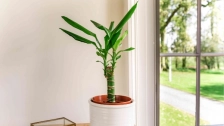
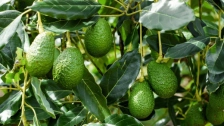
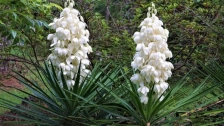






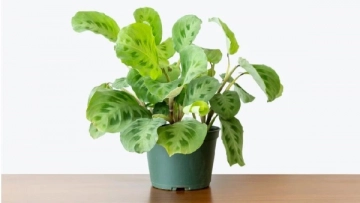

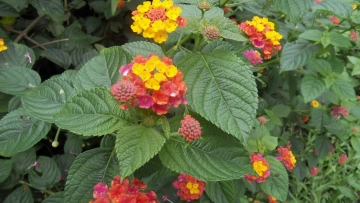
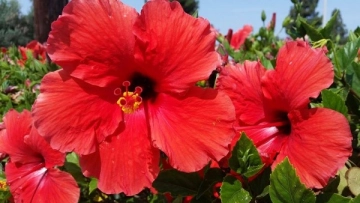
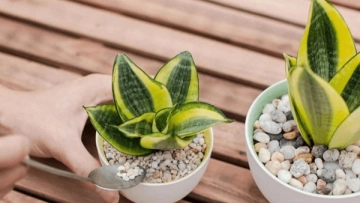
Euglen Sota
September 29 , 2024
Cam Giang
October 03 , 2024